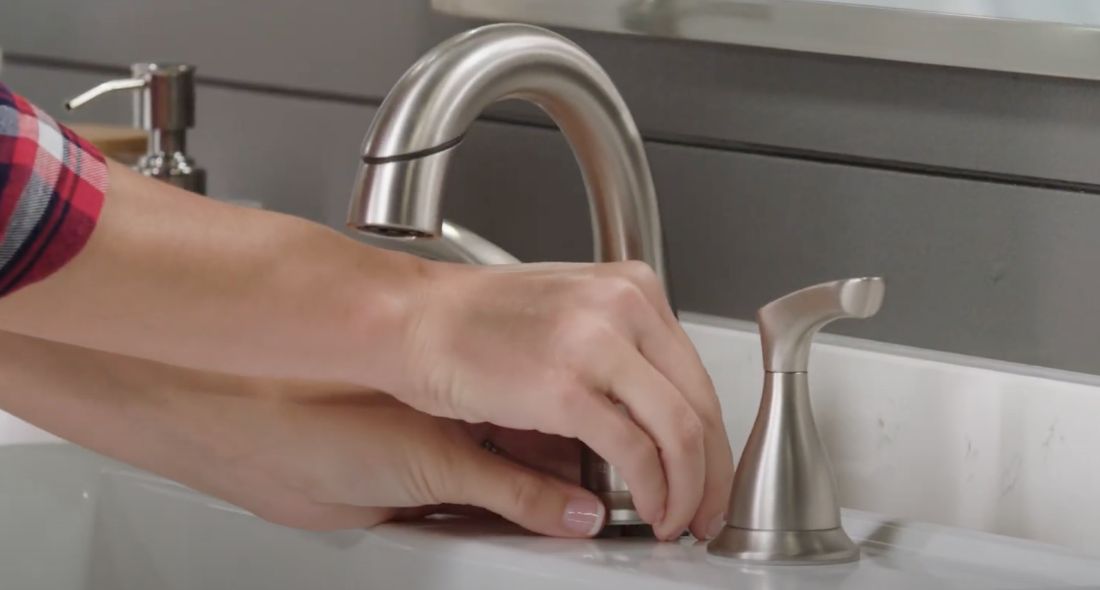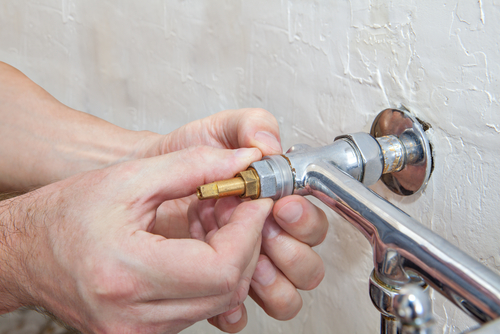Exploring the Relevance of Fixing a Faulty Faucet
Exploring the Relevance of Fixing a Faulty Faucet
Blog Article
The publisher is making a few great annotation relating to Why It's Important to Fix Leaky Faucets as a whole in this post underneath.

Dripping taps might seem like a minor aggravation, however their effect exceeds just the inconvenience of the audio. From drainage to sustaining unnecessary monetary prices and health dangers, overlooking a dripping tap can lead to different effects. In this short article, we'll explore why it's crucial to address this typical household problem immediately and effectively.
Wastage of Water
Ecological Impact
Leaking taps add significantly to water waste. According to the Epa (EPA), a solitary tap trickling at one drip per secondly can waste greater than 3,000 gallons of water each year. This not just strains water resources but likewise impacts ecosystems and wildlife dependent on them.
Financial Costs
Enhanced Water Expenses
Past the ecological influence, dripping faucets can inflate water bills substantially. The accumulated wastage over time translates into greater utility costs, which might have been prevented with timely repair work.
Prospective Building Damages
Additionally, extended leaking can cause harm to fixtures and surfaces surrounding the faucet. Water accumulation can create discoloration, rust, and even architectural problems if left ignored, leading to additional repair prices.
Wellness Worries
Mold and Mold Development
The continuous presence of wetness from a dripping tap produces an optimal environment for mold and mildew and mold growth. These fungis not only compromise interior air quality yet likewise pose wellness threats, especially for people with respiratory conditions or allergies.
Waterborne Conditions
Stationary water in trickling taps can end up being a breeding ground for germs and other pathogens, enhancing the risk of waterborne conditions. Pollutants such as Legionella microorganisms prosper in stagnant water, possibly causing severe diseases when consumed or inhaled.
DIY vs. Specialist Repair service
Advantages and disadvantages of DIY Fixing
While some might try to repair a trickling tap themselves, DIY fixings feature their own collection of difficulties. Without correct knowledge and tools, do it yourself efforts can exacerbate the problem or bring about incomplete repair work, extending the trouble.
Benefits of Employing a Specialist Plumber
Working with a professional plumber makes certain that the underlying cause of the leaking tap is resolved effectively. Plumbing technicians possess the expertise and devices to identify and fix tap concerns successfully, conserving time and minimizing the risk of additional damages.
Step-by-Step Overview to Fixing a Dripping Faucet
Tools Needed
Before attempting to deal with a trickling tap, collect the essential devices, consisting of a flexible wrench, screwdrivers, replacement parts (such as washers or cartridges), and plumber's tape.
Typical Faucet Issues and Their Solutions
Identify the type of faucet and the specific issue causing the drip. Common problems consist of worn-out washers, rusty shutoff seats, or damaged O-rings. Describe supplier guidelines or on-line tutorials for detailed support on repair services.
Safety nets
Routine Upkeep Tips
To avoid leaking faucets, perform regular upkeep such as cleaning up aerators, examining for leaks, and changing damaged parts quickly. Additionally, take into consideration mounting water-saving gadgets or upgrading to more reliable components.
Value of Prompt Repair Works
Dealing with trickling taps as soon as they're seen avoids further water wastage and possible damage, ultimately conserving both water and money in the future.
Influence On Residential Property Worth
Understanding of Well-Maintained Building
Keeping a property in good condition, consisting of dealing with upkeep concerns like dripping taps, enhances its regarded value and worth amongst potential purchasers or renters.
Influence on Resale Worth
Qualities with properly maintained plumbing components, including taps, command greater resale values in the realty market. Addressing trickling faucets can contribute to a favorable impression during home inspections and settlements.
Ecological Obligation
Specific Contribution to Preservation
Taking duty for repairing trickling faucets lines up with wider efforts toward water preservation and ecological sustainability. Every person's actions collectively make a considerable influence on preserving precious sources.
Lasting Living Practices
By focusing on prompt repair work and adopting water-saving routines, people add to lasting living practices that benefit both present and future generations.
Final thought
Attending to a trickling tap goes beyond mere benefit; it's an important step toward saving water, minimizing monetary prices, and guarding wellness and property. Whether through DIY repairs or professional assistance, taking action to fix dripping taps is a tiny yet impactful means to advertise accountable stewardship of resources and contribute to a healthier, more lasting future.
How to Fix a Leaky Faucet: Step-by-Step Repair Guide
A leaky faucet may seem like a simple annoyance, but if it's not fixed promptly, that leak could cost hundreds to potentially thousands. From water damage to mold, mildew, and high water bills, even a tiny leak can be catastrophic if left unattended. Damage like this can even affect the overall value of your home, so it's important to take the right approach for leaky faucet repair. You may need the help of a plumber in some cases, but we've got a few tips you can try on how to fix a leaky faucet before calling the pros.
Four Faucet Types
When you're learning how to fix a leaky faucet, the first step is knowing what kind of faucet you're working with! There are four common types.
Cartridge Faucets
Cartridge faucets come in one- or two-handled varieties. In one-handled cartridge faucets, hot and cold water combines in a single cartridge. In the two-handled versions, hot and cold water are controlled separately and mixed in the faucet.
Ball Faucets
Ball faucets have a single lever you push up and down to adjust the pressure and rotate to change the temperature. A slotted metal ball controls the amount of water allowed into the spout.
Compression Washer Faucets
They're the oldest type of faucet, but they're still used in many homes — especially older ones. Compression faucets have two separate handles that, when turned, raise or lower the washer that seals a water valve. This valve stops water from flowing through the faucet when it is turned off.
Disc Faucets
Disc faucets rarely need to be repaired due to their maintenance-free design. The water flow is controlled by two discs — the upper one raises and lowers against a fixed lower disc, creating a watertight seal. If your disc faucet starts leaking, you may need to replace the seals or clean residue buildup from the inlets.
Fixing a Leaky Faucet
Step 1: Turn Off the Water
Whether you're learning how to fix a leaky bathtub faucet or how to fix a leaky kitchen faucet, always turn off the water supply to your working area when you're fixing a leak. The last thing you want is a flood added to your list of things to fix.
Look for the shutoff valves below your sink or around the tub and turn them clockwise to stop the water flow. If your faucet doesn't have shutoff valves, you may need to turn off the water for the whole house. Check to make sure it's off by turning the faucet on. If nothing comes out, you're ready to start the repair.
Step 2: Take Apart the Faucet
How you disassemble your faucet depends on the type of fixture you have. You can use a flathead screwdriver to remove the caps on top of the handle or handles for cartridge and compression faucets. Inside, you should see handle screws. Unscrew these with a screwdriver to remove the handle.
Disc- and ball-style faucets will typically have an inlet screw near the handle, and removing that will reveal the interior of the faucet.
Detach the Valve Stem
For cartridge- and compression-style faucets, you'll see the inner valve stem or cartridge once you remove the faucet handles. If you have a compression faucet, unscrew the brass valve stem. If you have a cartridge faucet, pull out the cartridge. If your cartridge has been in place for a while, it may require some tools or extra force to remove it due to mineral deposits.
Examine and Replace Parts
Once you've removed the parts, check them out to confirm what needs to be replaced. You may see corroded rubber washers, O-rings, stems, or cartridges. On a ball-style faucet, check the seats and springs for damage.
If you need to repair a leaky disc faucet, check the inlet and seals on the lower disc.
Once you determine what parts must be replaced, visit your local hardware store. Bring the damaged parts with you to ensure you can purchase the correct components to replace them.
Clean Valves and Faucet Cavity
If you've removed a stem or cartridge, you may notice mineral buildup in the faucet's threads. Use white vinegar to clean the valve seat by soaking it for a few minutes, then scrub it away with a soft toothbrush and rinse with warm water. You can also clean the interior of the faucet in the same way.
Reassemble the Faucet
Once your faucet is cleaned and the required parts have been replaced, it's time to reassemble it. Put the pieces back together and slowly turn the water supply back on. Doing this slowly is crucial because too much initial water pressure can damage the new hardware you've just installed.
https://homewarranty.firstam.com/blog/how-to-fix-leaky-faucet

Do you like reading about Water Dripping from Faucet: Why and How to Fix? Place feedback directly below. We will be pleased to know your opinion about this piece. In hopes that you come back again before long. Do you know about anybody else who is in to the subject? Be sure promote it. I enjoy your readership.
Report this page